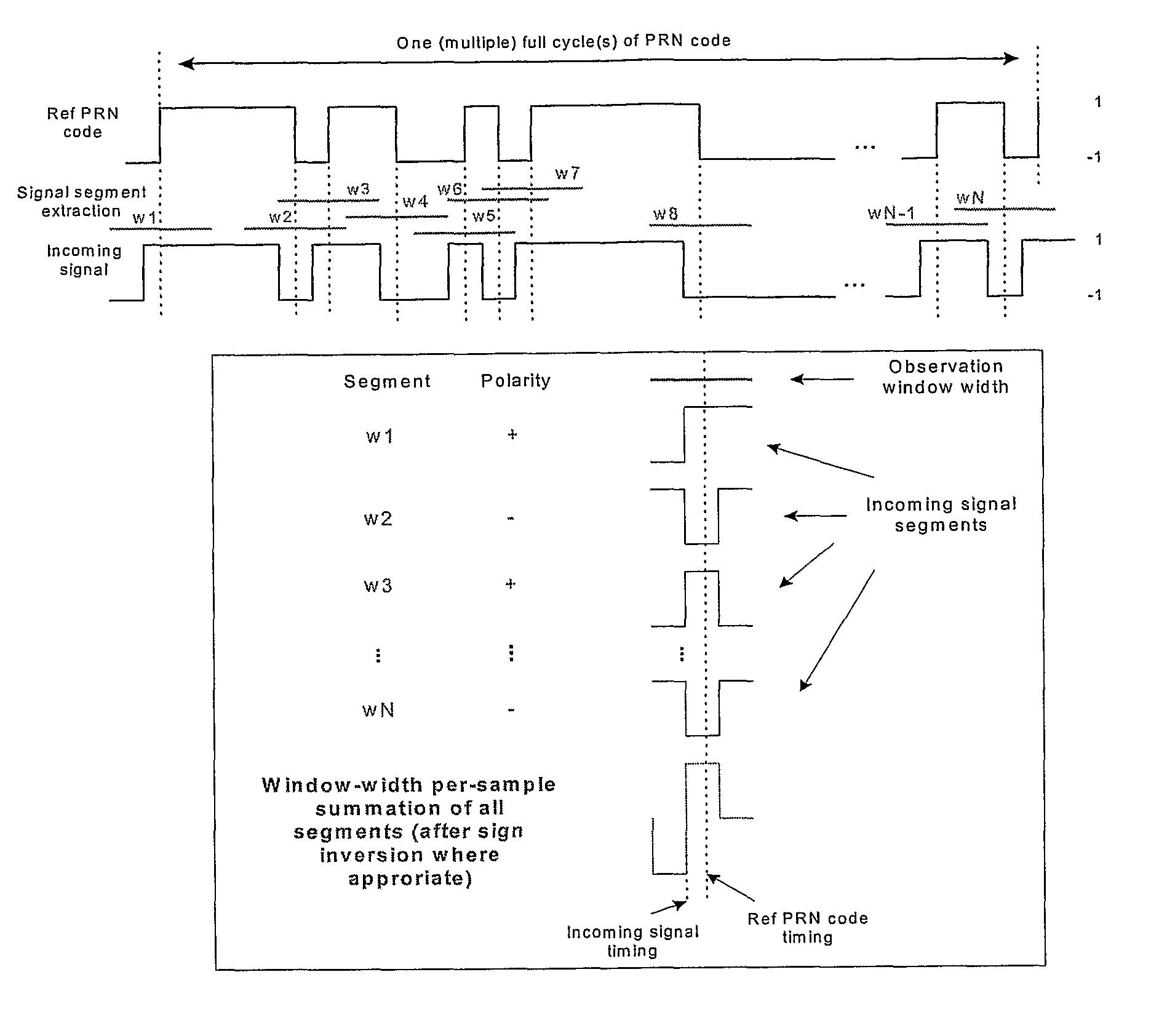Time delay measurement
a time delay and measurement technology, applied in the field of time delay measurement, can solve the problems of reducing the accuracy of the local clock, unable to meet the needs of many applications, and inevitably far less accurate and stable than the ones residing, so as to reduce the noise, the effect of time delay determination and reducing the impact of nois
- Summary
- Abstract
- Description
- Claims
- Application Information
AI Technical Summary
Benefits of technology
Problems solved by technology
Method used
Image
Examples
Embodiment Construction
[0035]The invention will be described in the context of the processing of incoming GPS navigation signals and making a signal arrival time measurement of the LoS signal. However, many alternative implementations are possible.
[0036]FIG. 1 is a simplified block diagram illustrating a typical prior art receiver structure of a GPS receiver for processing the incoming signal. Here, the PRN code type is assumed to be of the public civilian C / A (C / A=coarse access or civilian access) code for simplicity. The core components in the figure, as far as the signal processing aspects are concerned, are the multiple identical channels. Each tracks a given satellite by configuring the PRN code generator to produce the code sequence corresponding to that given satellite. As shown in the figure, the received radio frequency signal is sampled after down-conversion and the samples are fed to multiple channels for independent channelized processing, which is possible due to the orthogonal property betwe...
PUM
 Login to View More
Login to View More Abstract
Description
Claims
Application Information
 Login to View More
Login to View More - R&D
- Intellectual Property
- Life Sciences
- Materials
- Tech Scout
- Unparalleled Data Quality
- Higher Quality Content
- 60% Fewer Hallucinations
Browse by: Latest US Patents, China's latest patents, Technical Efficacy Thesaurus, Application Domain, Technology Topic, Popular Technical Reports.
© 2025 PatSnap. All rights reserved.Legal|Privacy policy|Modern Slavery Act Transparency Statement|Sitemap|About US| Contact US: help@patsnap.com



